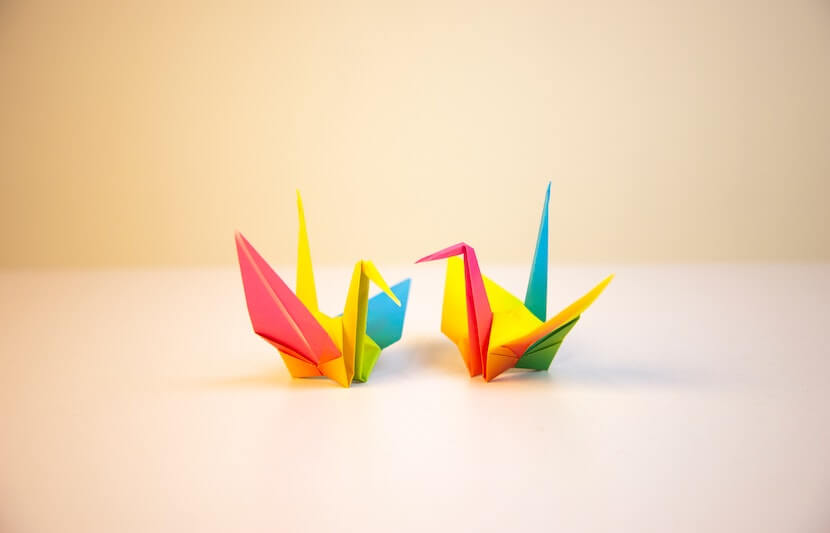Inspired by the wings of an earwig, which open and fold like an origami, researchers from ETH Zurich, Switzerland, and Purdue University have developed a 3D structure that operates on the same principle. This breakthrough, according to the researchers, has real world applications, even in space.
Led by Jakob Faber, a postdoctoral scientist at ETH’s research group, Complex Materials, the study is published in the journal Science.
Two other scientists — André Studart, a professor and head of Complex Materials at ETH, and Andres Arrieta, an assistant professor of mechanical engineering at Purdue University — were involved in the study.
The inspiration
The earwig’s wings are a marvel of origami in nature.
When the wings open, they are 10 times larger than when closed. This makes it one of the highest folding ratios in the animal kingdom. While the size of the open wings allows the earwig to fly, the wing’s ability to retract so significantly makes it possible for the insect to squeeze into tight spaces without damaging its wings.
The wing’s design is also unique in another aspect. When open, the wing is locked and stays rigid without any muscular support on the insect’s part. When it comes to folding, a mere “click” is enough without the need for muscular actuation.
“The earwig came to our attention because it was previously observed by biologists that its folding pattern could do amazing things,” said Faber.
“However, nobody fully understood what was happening on a mechanical level. Thus, these special functions were also never embedded in man-made folding structures, raising our curiosity of how we could do so.”
The study
After studying the complexity of the earwig’s wings, Faber and his team have now successfully created an artificial structure that mimics the functions of the origami-like wings.
The researchers first performed a computer simulation of the wing’s function, so they could analyze its structure and function.
They found that if the wing were to operate on the classical origami principle, which they described as “using rigid, straight folds with an angular sum of 360 degrees at their intersections,” the maximum folding ratio would just be a third of the wing’s size.
The 10-times high folding ratio of the earwig’s wing, they concluded, lies in the elastic folds of the earwig’s wing, which is designed to operate either an extensional or rotational spring.
They also determined that it was the joints in the wing, made from layers of a special elastic biopolymer called resilin, and their arrangement and thickness that dictate the spring type. In some cases, they found, both the extensional and rotational functions of the wing are carried out by the the same joint.
The researchers also studied the central mid-wing joint, which is the point in the wing that locks or stabilizes the wing when open or closed.
The “4D” invention
The researchers then successfully created a so-called 4D object using the findings from their computer simulations.
After transferring their findings to a multi-material 3D printer, they were able to print an object consisting of four stiff plastic plates, which were specifically programmed to extend or rotate like the earwig’s wing. These four plates are connected to each other by a soft elastic joint that replicates the elastic folds of the earwig’s wing.
The researchers also successfully applied the principle to larger elements and printed a spring origami gripper, which is designed to self-fold, lock and grip objects without external actuation.

The research took about one-and-a-half years of ideation, math analysis, computer simulations, prototype development, and writing to complete, said Faber.
Real world applications
While the 3D printed, self-folding origami elements are available only as prototypes at this time, the researchers believe that their technology could be applied to foldable electronics, or foldable tents, maps or package inserts, which can be difficult to restore to their original state.
The researchers also believe that their technology would be very useful in many aspects of space travel. For example, key items such as solar sails for satellites or space probes could be transported into space in their folded or locked stage, which would occupy little space, and can be unfurled to their actual size once in space. The technology would save space, weight and energy, as the self-folding origami elements are designed to spread or fold without the need for actuators or additional stabilizers.
“This work enlarges the design space of origami structures by adding tools to the toolbox,” said Faber.
“These tools are scale and material independent. This makes them implementable into many of the already existing, fascinating origami applications. Already today, origami is employed in a wide range from robotics and deployable biomedical devices to efficiently foldable solar arrays and even concepts for solar sails in space travel. Our aim is to inspire researchers and companies to embed the earwig’s functionalities in these exciting projects.”








